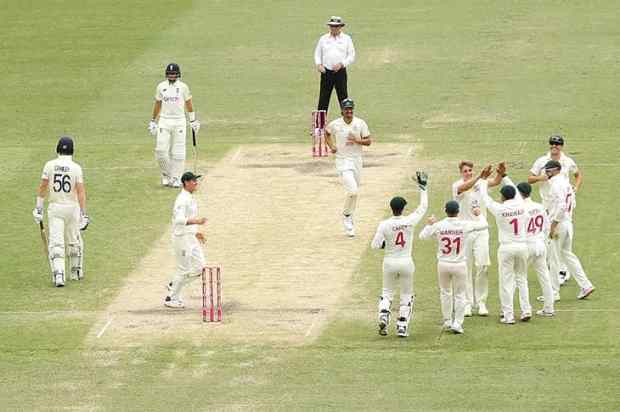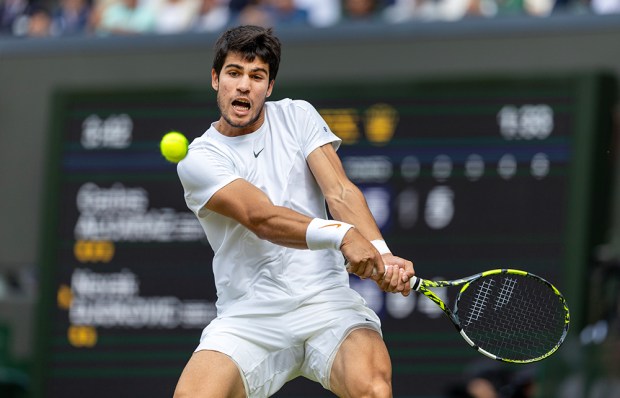Michael Vaughan might disagree but — putting aside 2005 and all that — was there a more thrilling and satisfying series than India’s evisceration of the Aussies which ended at the Gabba? Especially after being rattled out for 36, their lowest ever score, in Adelaide in the first Test, when no one, not even extras, reached double figures, and then losing many of their best players to injury or absence.
They’ve pulled off a skilful trick, the Indians, in making the world see them as underdogs despite them being a cricket-mad country of more than a billion people, which already runs and owns the game. Now there can’t be a cricket fan on the planet who isn’t excited about England’s upcoming Test series against Virat Kohli’s multi-talented team.
The Indians have shown a mixture of flair and grittiness that hasn’t always been present in their sides. As Justin Langer said after the defeat in Brisbane, you’ve got to be exceptional to make the Indian first XI. And with millions to pick from, you’ve got to be pretty good to get in the reserves too. Rishabh Pant, the match saver in Sydney and the winner at Brisbane, made centuries as a 16-year-old in under-19 tournaments, and a triple century soon after. The rise of Mohammed Siraj is real Boy’s Own stuff. His father was a rickshaw driver who died on the eve of the series. Siraj was unable to return to grieve, being Covid-bubbled in Australia, but he still managed to be India’s top wicket taker. The debut quickie Thangarasu Natarajan comes from a village in Tamil Nadu, where his father works on a loom and his mother runs a food stall.
For anyone still of a mind to scoff at T20 cricket, most of this Indian Test side (with the possible exceptions of Ishant Sharma and Cheteshwar Pujara) have learned and developed in the Indian Premier League, playing under enormous pressure when every ball matters. It’s real packed–stadium cricket, not footling around in our own T20 Blast in the drizzle at some county ground. The IPL is the NFL of cricket and will never be rivalled: a perfect breeding ground for big match players who are fearless.
England, meanwhile, will have to play out of their skins. Much will depend on Root and Buttler. It will be interesting to see how India handle Root’s sweep, while Buttler has developed his own technique for dealing with spinners. It will be a big test of Stokes’s batsmanship, which is proven on flat pitches but might be less secure on a bunsen in Ahmedabad. The spin twins from the Quantocks, Bess and Leach, shone in Sri Lanka but may lack the quality to trouble the Indian batsmen. And surely Jimmy Anderson, who sometimes seems to have been around so long he might once have troubled W.G., cannot surprise us again.
Sadly, our national broadcaster will be nowhere near what looks like being a magnificent series. So huge thanks to Channel 4, which is televising the games, the first Test cricket on terrestrial TV since 2005, with Alastair Cook and Andrew Strauss sharing the on-screen honours. The radio duties will be taken over by the effervescent TalkSport, which is planning more than 200 hours of live coverage, helmed by, among others, Steve Harmison, Darren Gough, KP and Marks Nicholas and Butcher.
Throughout this Covid winter, Test cricket has burnished its reputation as tiptop sporting entertainment, especially when set against some dreary autumn rugby and recent football matches with very overworked players. It is symptomatic of the BBC’s cricket blindness that they continue to be so dazzled by football. If Fulham vs West Bromwich Albion — a game between two bang-average sides that you might swerve if it was on in your garden — deserves a place in the Beeb’s schedule, then surely the national cricket team does too.
Got something to add? Join the discussion and comment below.
Get 10 issues for just $10
Subscribe to The Spectator Australia today for the next 10 magazine issues, plus full online access, for just $10.
You might disagree with half of it, but you’ll enjoy reading all of it. Try your first month for free, then just $2 a week for the remainder of your first year.















Comments
Don't miss out
Join the conversation with other Spectator Australia readers. Subscribe to leave a comment.
SUBSCRIBEAlready a subscriber? Log in